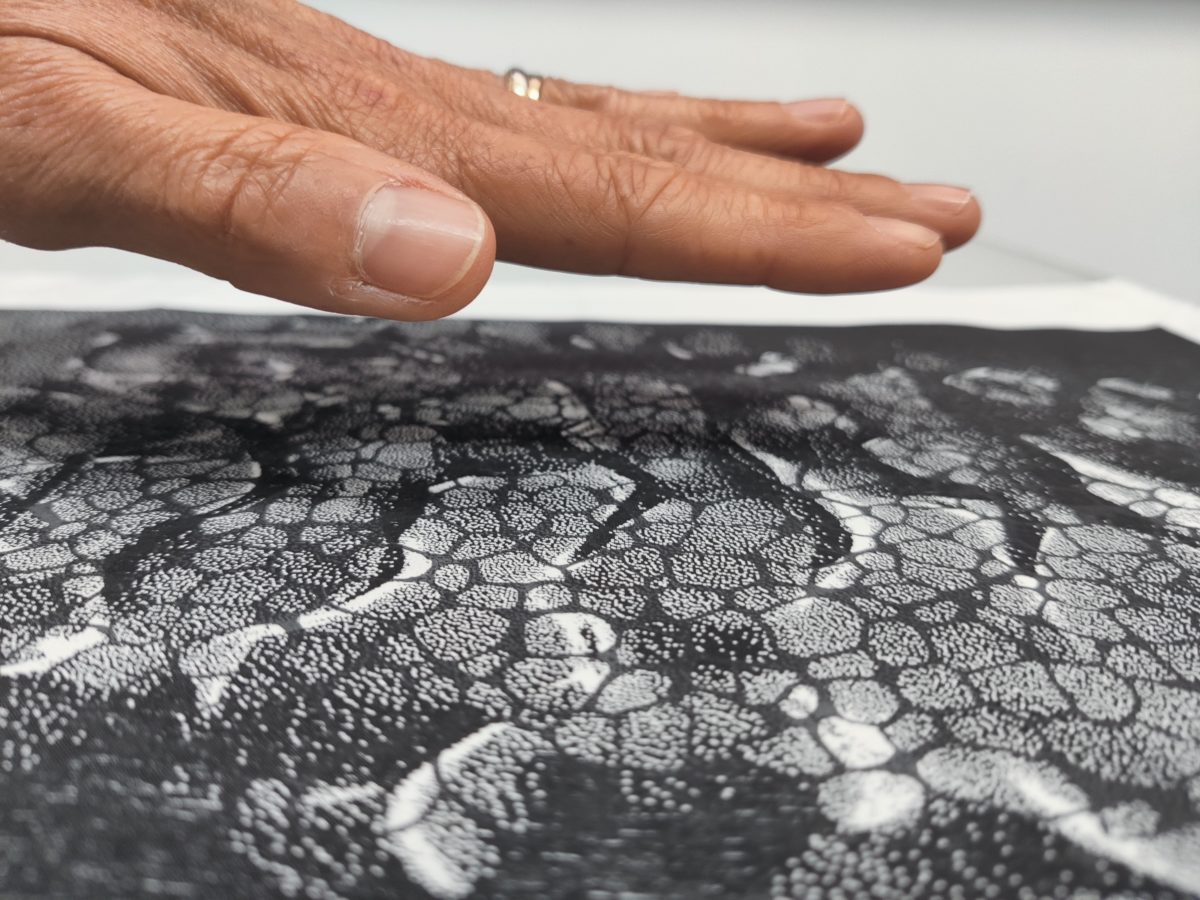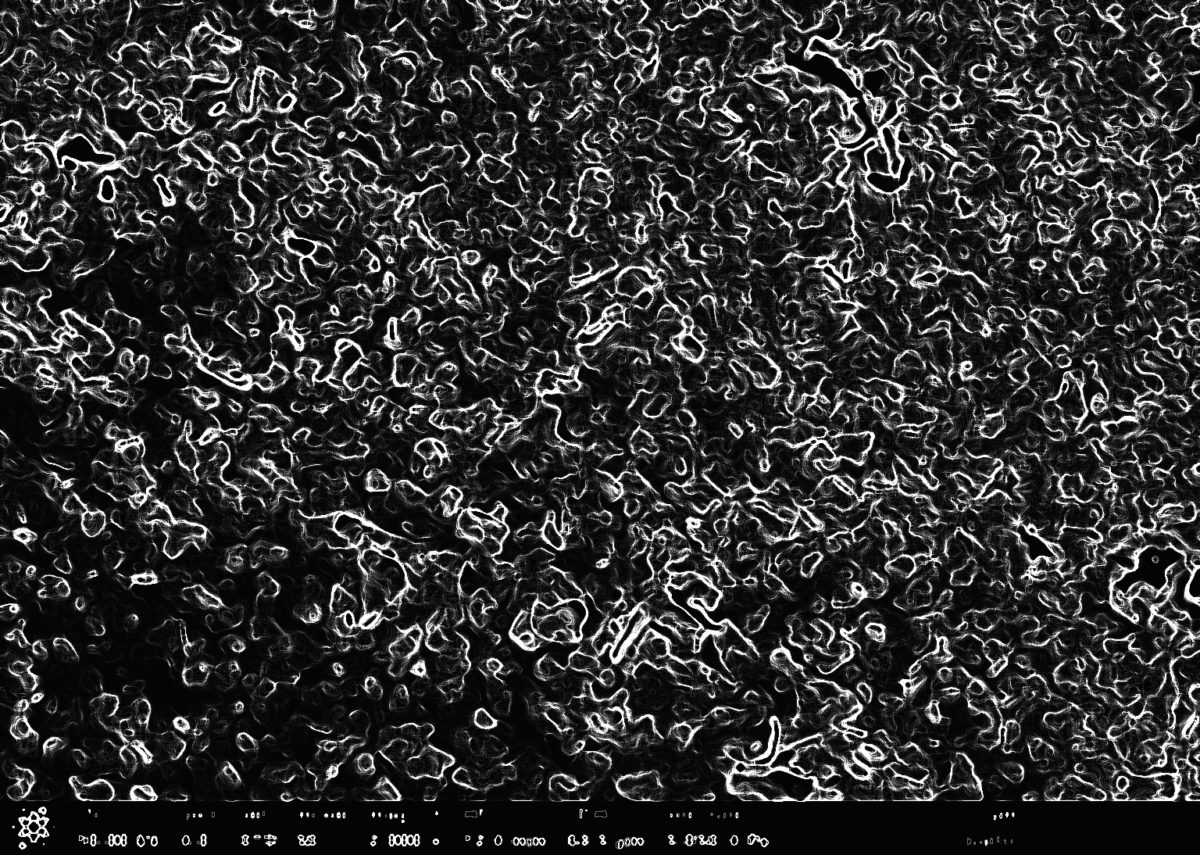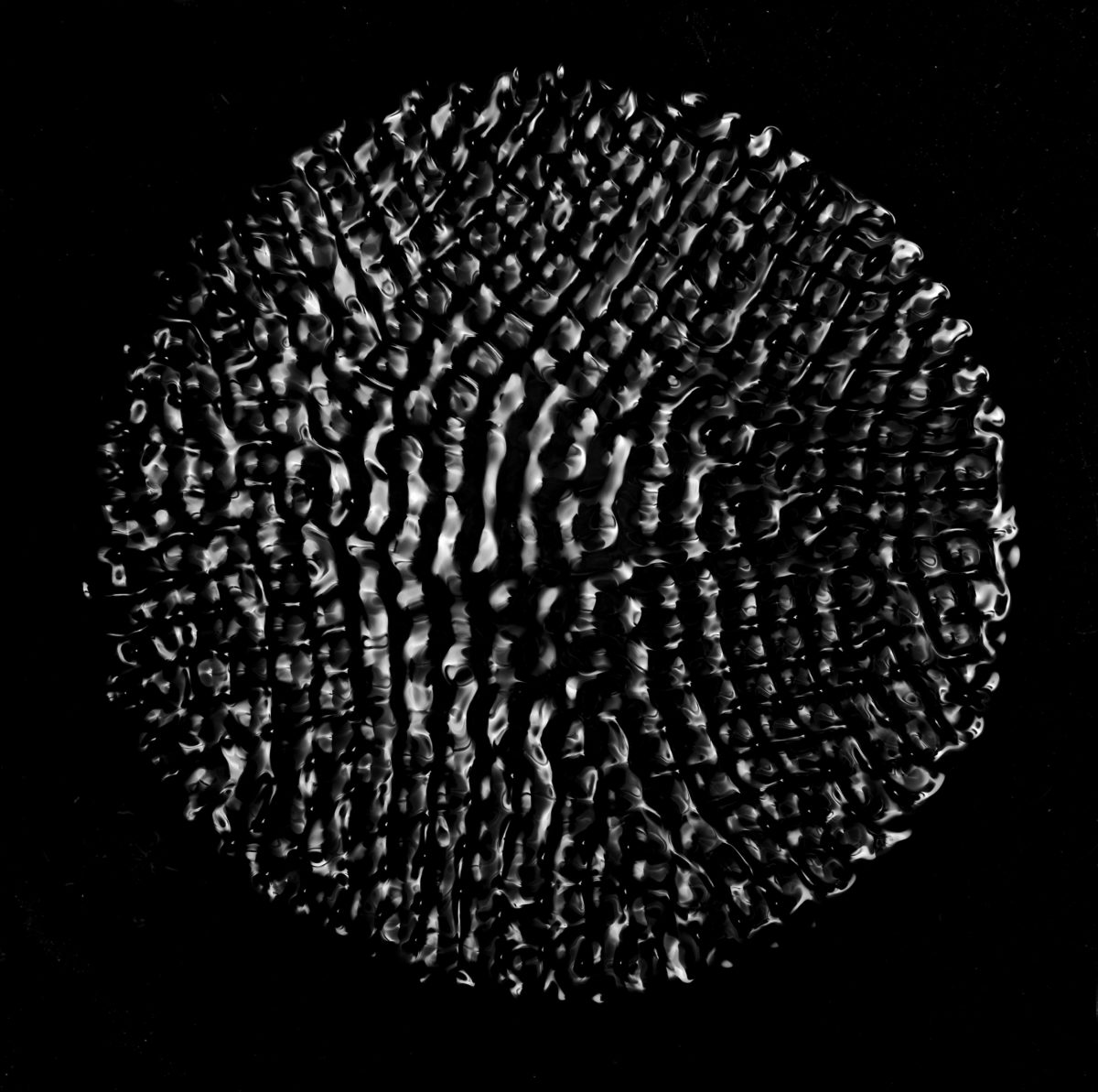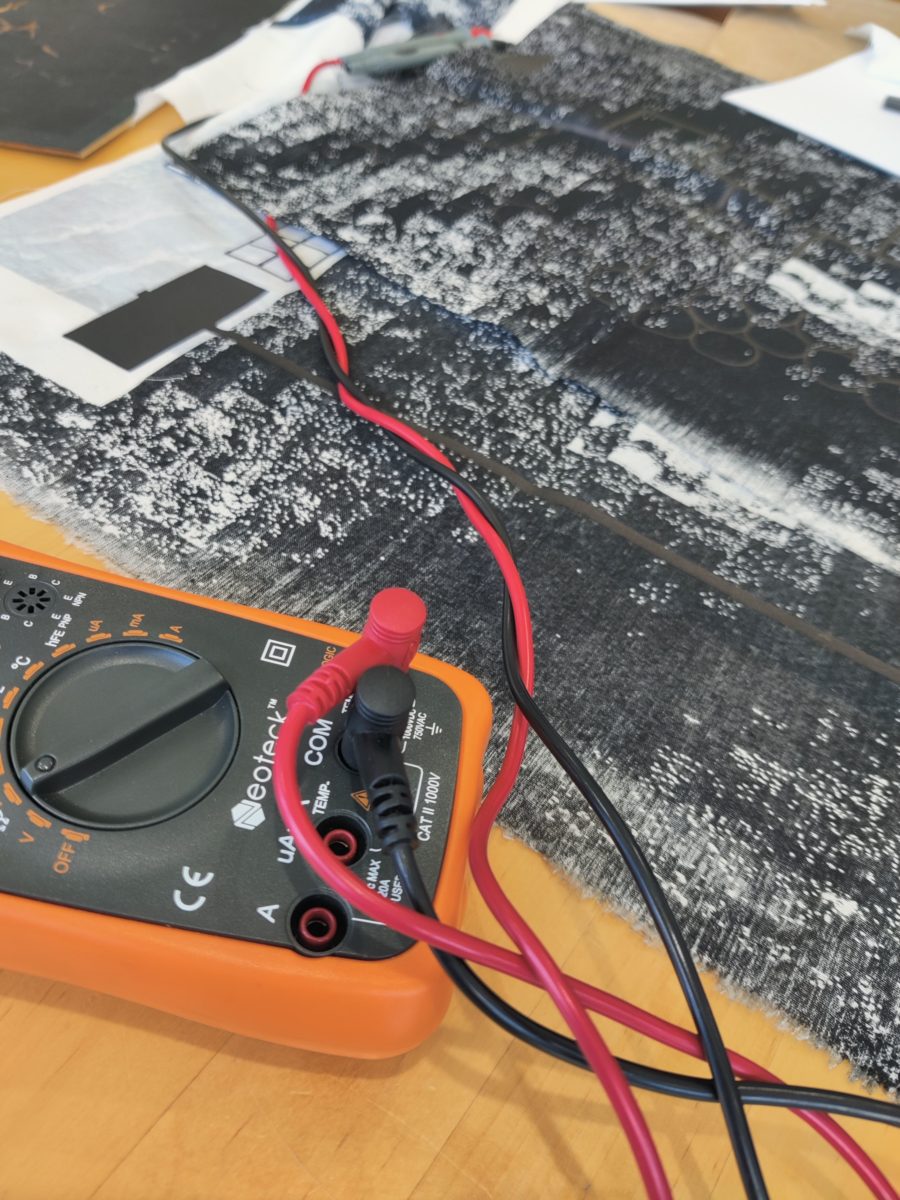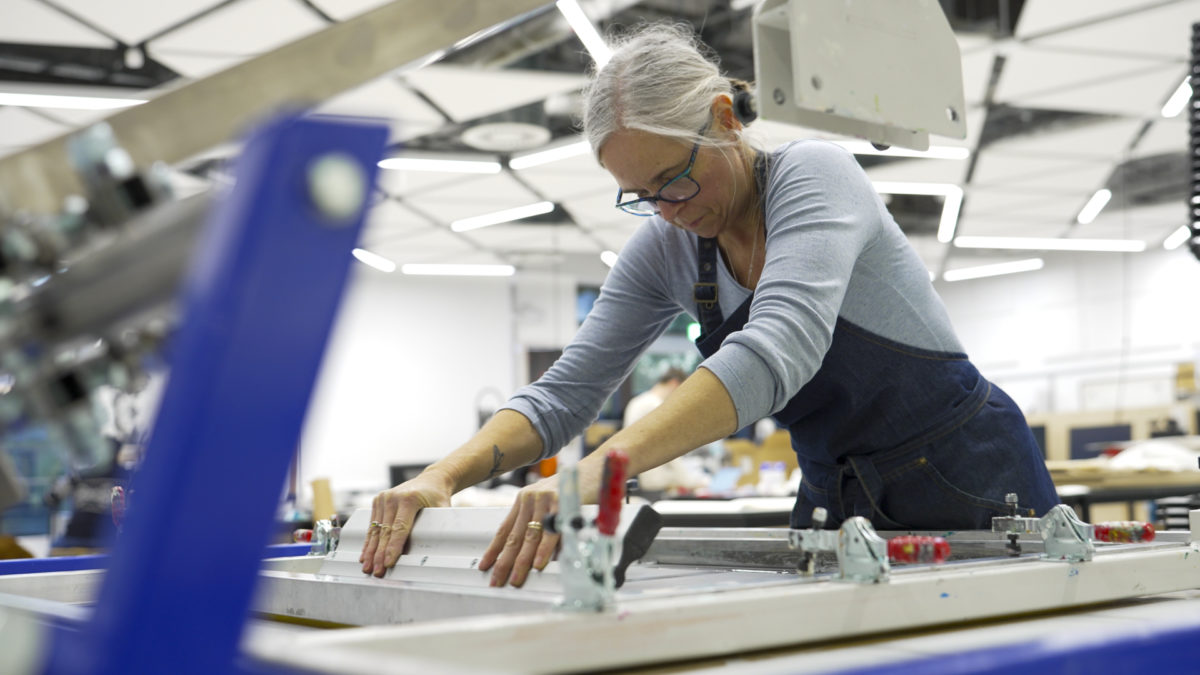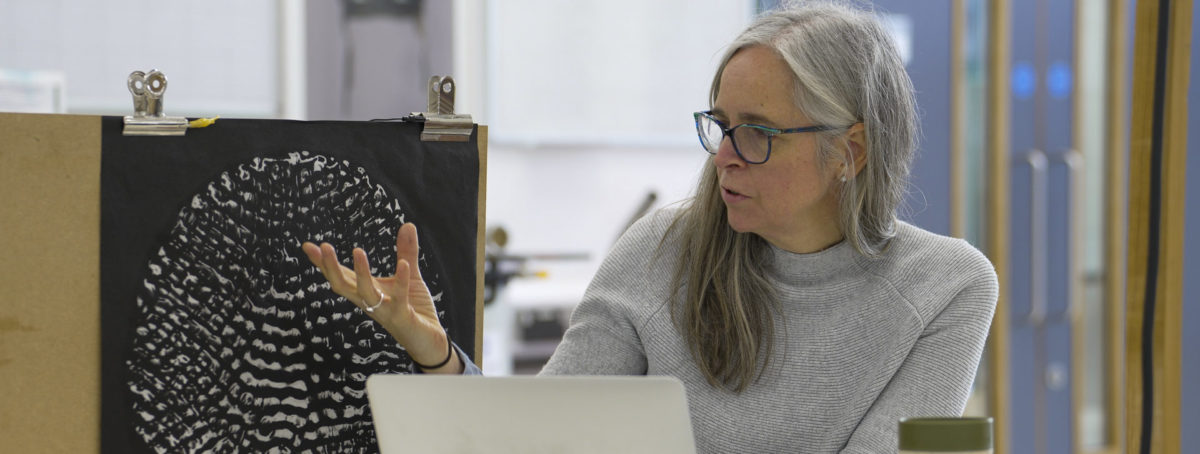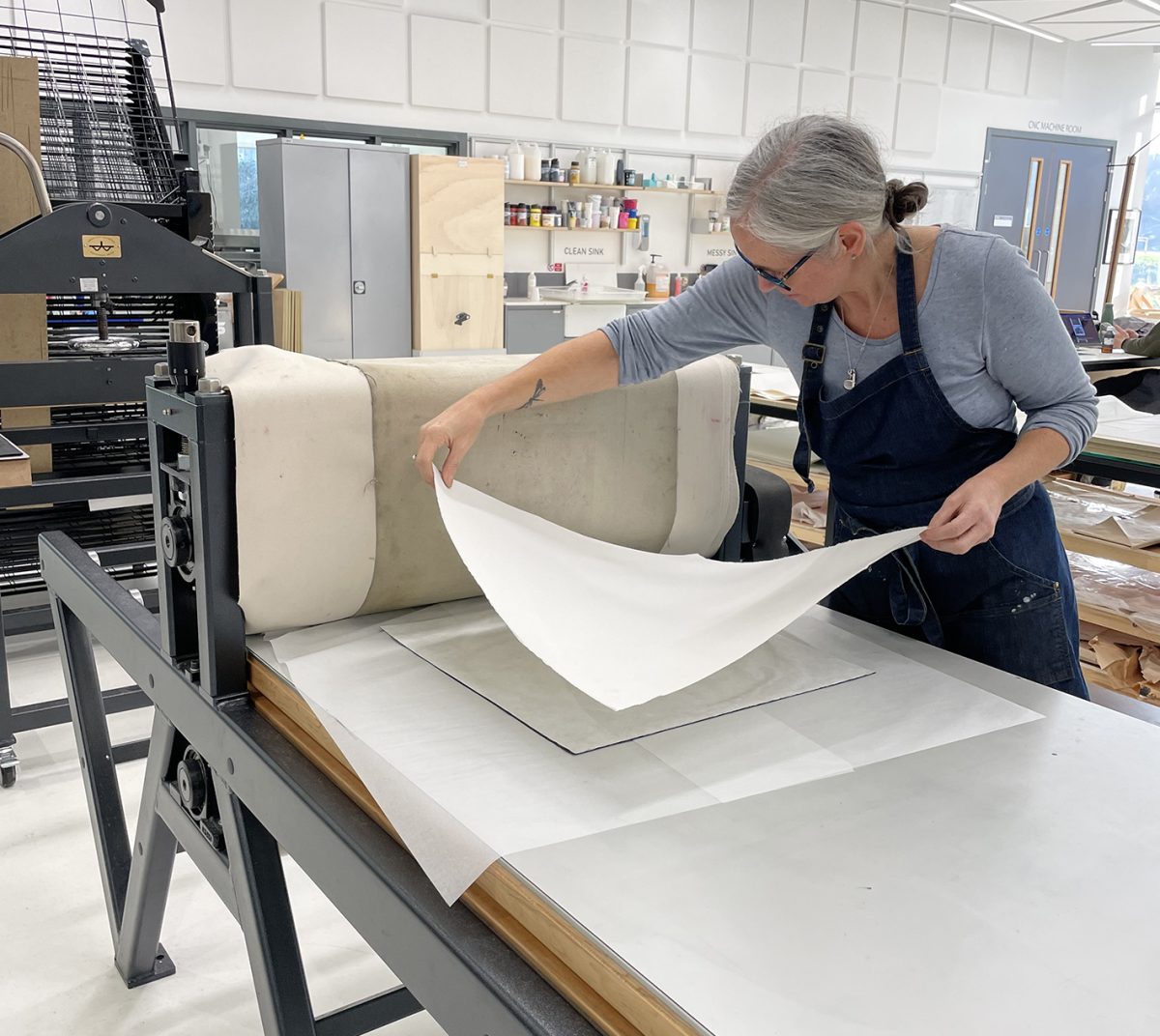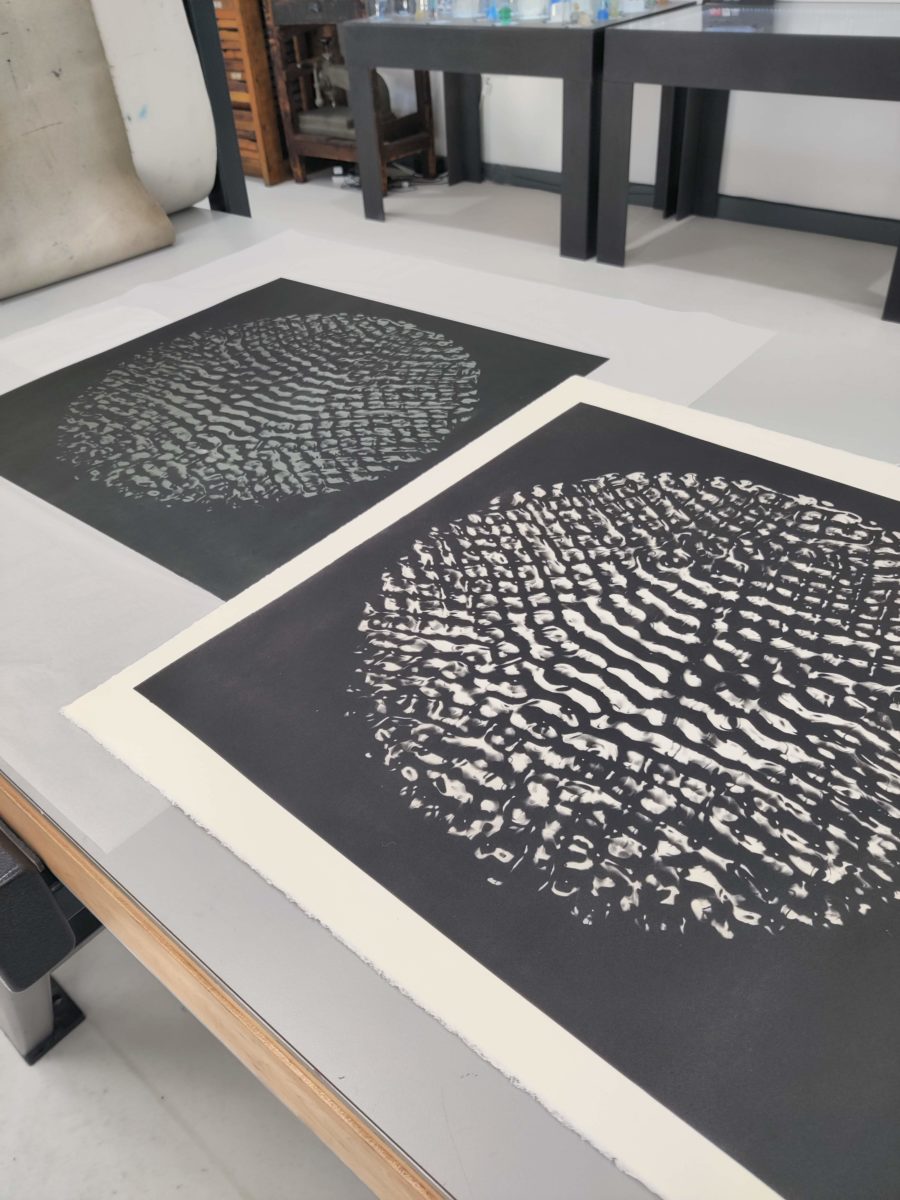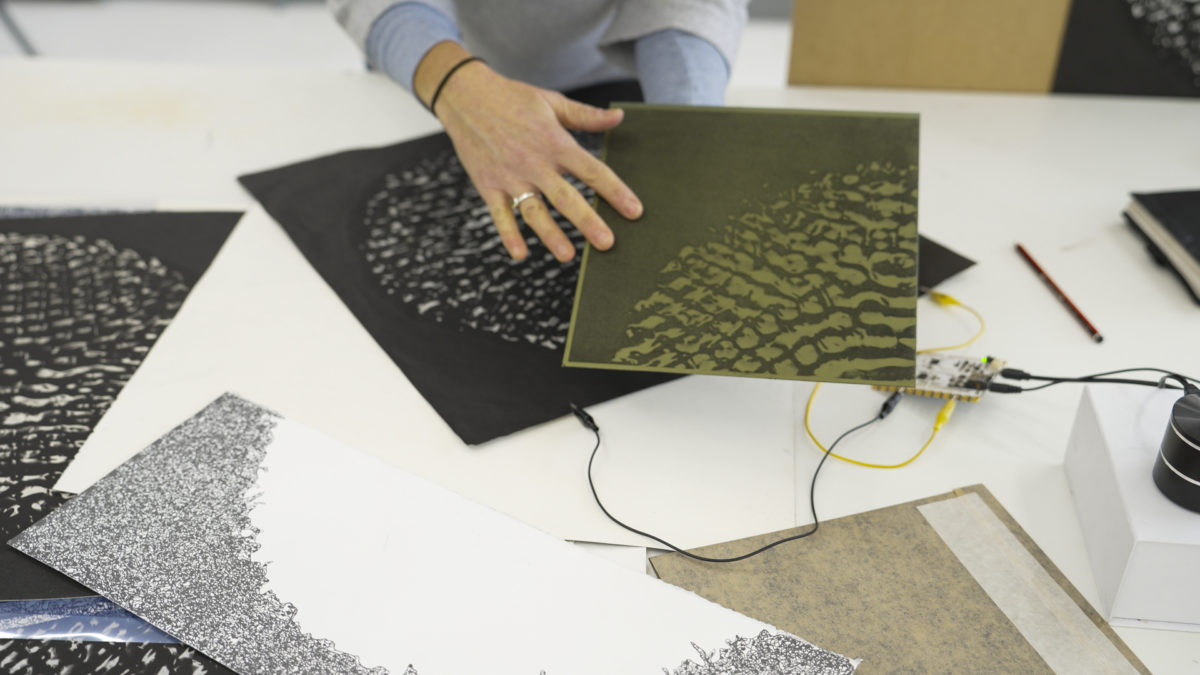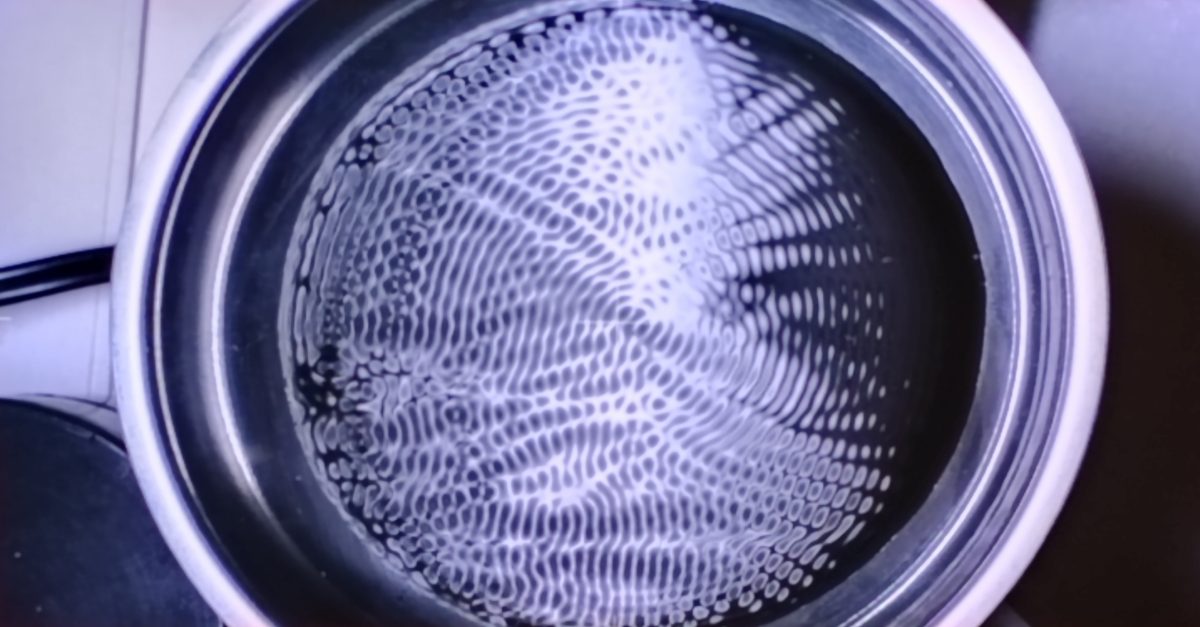
Sonorous
In 2022 I was delighted to be awarded a research residency at the Centre For Print Research (CFPR). The artist in residence programme presents a truly exciting opportunity for collaboration and the enrichment of the CFPR’s research activities. Artists and designers will make a body of work that contributes to the CFPR archive and the editions portfolio.
My interrogation and interest of my walking body as a receiver and conduit of unseen energy led to my research proposal to explore print as a co-creator with my body to produce a sensing, responsive print surface.
In a continuation from tests at AirSpace, ‘Sonorous’ aimed to combine screen printed graphene and traditional print techniques. I wanted to create a surface in a state of flux. Visually dynamic, processes colliding, revealing and obscuring simultaneously.
Material testing was undertaken in collaboration with Dr Nazmul Karim both at CFPR and Artlab Contemporary Print Studios (ACPS) in Preston. Forensic labs at UCLan helped to reveal the inner structure of the graphene ink, this structure became the basis of the screenprinted graphene image. Hand drawn, the scale, complexity and thickness of the lines all had to be tested to try to achieve the most reactive and conductive surface.
Sonic tests at AirSpace gallery with musician Phill Phelps revealed a sequence of cymatics images as we played inaudible sounds through drawing ink. My residency at CFPR provided the opportunity to revisit this experiment, photographing the captured sounds though various liquids to attempt to capture the resonance patterns.
Cymatics was first used in 1967 by Hans Jenny, a physician and natural scientist who used the term to describe the study of wave phenomena and vibration. Using this simple method of playing sound through a vibrating membrane it is possible to simultaneously hear and see sound. Current research indicates that similar much smaller vibrations are happening in our bodies. Inside each one of our cells, molecules vibrate at their own characteristic resonance.
The resulting images revealed the rhythmic velvet patterns and sensory flow of the captured liquid sound.
Traditional hand printing combined both screen and etched layers making visible the unseen structures and material presence in a physical process of exchange.
The final polymer gravure print at a first glance shows no obvious signs of what lies below the surface, however, it carries the potential to reveal the unheard in an exchange of energy between the body and ink. So, when wired and connected to a speaker, as your hand passes in proximity to the surface of the print, the performative exchange of energy triggers sound. The unseen revealing the unheard.
Sonorous: The sonic landscapes of Tracy Hill by Jacqui McIntosh, May 2023
